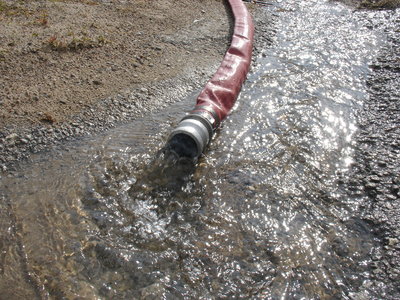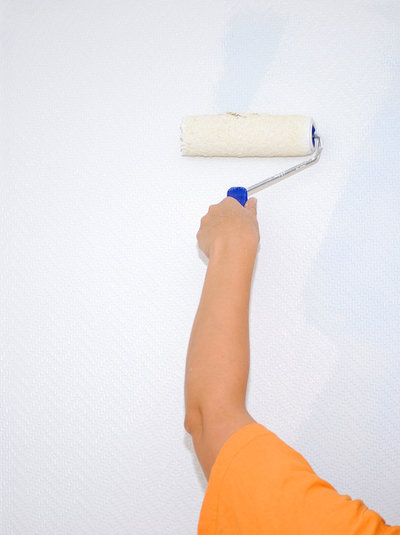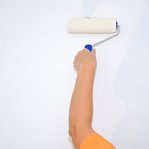In the wake of the tragic and devastating storm that has left a huge number of Long Island’s communities in ruins this week, homeowners are now being faced with the terrible task of sorting through the damages, salvaging what they can and planning to repair or rebuild their homes and lives. So many members of our local community are now faced with this overwhelming situation. There is no doubt that some of the worst things you can experience in your entire life are the loss of your loved ones, your home and belongings, and having your entire lives turned upside down by a storm of this magnitude.
 If you are like most of Long Island you have experienced some damage to your home from Hurricane Sandy. Almost everyone will need a roofer and someone to repair siding or windows, as well as stump grinders to get rid of the remnants of downed trees Sandy left behind. Getting severe home damages repaired in a timely manner can help you to alleviate further issues with water damage or even further damages to your electrical, plumbing, heating or air conditioning systems, especially with the weather about to turn cold so soon. Carefully selecting the people who will be working to repair or rebuild your home will help you avoid further grief, annoyances and scams. Hiring a contractor can be a daunting process, so be sure to make a few calls, get multiple quotes from reliable professionals and do a thorough check on your selected contractor. Make sure they are legitimate and that they have a good record with your local consumer affairs office.
If you are like most of Long Island you have experienced some damage to your home from Hurricane Sandy. Almost everyone will need a roofer and someone to repair siding or windows, as well as stump grinders to get rid of the remnants of downed trees Sandy left behind. Getting severe home damages repaired in a timely manner can help you to alleviate further issues with water damage or even further damages to your electrical, plumbing, heating or air conditioning systems, especially with the weather about to turn cold so soon. Carefully selecting the people who will be working to repair or rebuild your home will help you avoid further grief, annoyances and scams. Hiring a contractor can be a daunting process, so be sure to make a few calls, get multiple quotes from reliable professionals and do a thorough check on your selected contractor. Make sure they are legitimate and that they have a good record with your local consumer affairs office.
There is nothing about hurricane damage that is generic. Be very careful upon entering your home, especially if it has been submerged in standing water for any length of time, or water or wind has pulled it apart. Are there broken pilings or cracks in the foundation? Do the floors or walls look slanted? Do NOT enter your home if the foundation or structure is visibly unstable. If your home was inundated with water, turn off your electricity. Take a wooden stick and shut off each circuit breaker. Unplug all appliances, remove light bulbs and outlet covers on any outlets that got wet. Remove heavy artwork or mirrors from the walls to prevent the collapse of wet sheetrock. If you smell gas or suspect a leak, first retreat to a safe distance and then call the authorities immediately. Are the doors swollen shut at the top? If they are it may be that the ceiling is inundated with water and buckling under the weight. Always look up and make sure the ceiling is not buckled and sagging before you enter a room to avoid being caught in a collapse. If it is, stay away from the sag. If necessary, very carefully take a broom or other long piece of wood and poke a small hole in the sagging area so that any water inside comes out and the entire ceiling does not collapse.
 If there is still standing water within your home, make sure to protect yourself by wearing tall rubber boots, rubber gloves and eye goggles. Generally, anything that stays wet for more than 48 hours will start to grow mold; anything that is porous and exposed to mold will need to be disposed of. Always wear protective clothing and respirators when dealing with mold. If your refrigerator was underwater, it’s a goner. Do not open it. If it was not underwater, wear goggles, protect yourself, open with caution and dispose of everything inside. Be sure to remove all parts inside and disinfect all surfaces thoroughly. Any food, even canned food, that has been touched by floodwaters should be considered contaminated and thrown out. Clean all non-porous surfaces with a disinfectant; non porous dishware may be salvageable once you can clean it properly.
If there is still standing water within your home, make sure to protect yourself by wearing tall rubber boots, rubber gloves and eye goggles. Generally, anything that stays wet for more than 48 hours will start to grow mold; anything that is porous and exposed to mold will need to be disposed of. Always wear protective clothing and respirators when dealing with mold. If your refrigerator was underwater, it’s a goner. Do not open it. If it was not underwater, wear goggles, protect yourself, open with caution and dispose of everything inside. Be sure to remove all parts inside and disinfect all surfaces thoroughly. Any food, even canned food, that has been touched by floodwaters should be considered contaminated and thrown out. Clean all non-porous surfaces with a disinfectant; non porous dishware may be salvageable once you can clean it properly.
Use fans, window air conditioners and dehumidifiers; do not use central air conditioning units as mold and bacteria may be growing in your vents. Open up all closet and cabinet doors to assist the drying out process. In general, sheetrock and wall insulation cannot be salvaged if it absorbs moisture and is growing mold, which is highly toxic. Spot check all your walls and ceilings for mildew and water damage and remove all affected sheetrock and insulation as soon as possible. If you are staying in your home and do not have power, do not use a generator, propane, gasoline or other burning devices inside your home. Carbon Monixide can build up indoors as a result; this is extremely toxic to people and animals, odorless, colorless and deadly.
Not everything will be a clear cut loss. For instance, wood may actually be salvageable, even if soaked in rainwater and given a chance to dry out. But if the water was toxic or contaminated, anything porous that it was in contact with should be carefully discarded. Wet rugs will grow mold and can put excessive strain on the flooring underlayment and buckle the wooden structure below if left in place for extended periods of time. It’s best to get those wet rugs out of your home immediately. Attempt to salvage what you can by opening a window if weather permits to air out the house. Cover any open holes in the roofing or siding with plastic tarps and nail them down with wooden strips or adhere with duct tape to keep them in place. Check for broken or leaking pipes and turn off the water or close any open valves to avoid further damages. With extreme damages, call an experienced contractor. Keep in mind that each home and circumstance will be unique. Professional flood restoration contractors can help you sort through your losses. They work hand in hand with insurance companies and specialize in flood damage, mildew cleanup and restoring homes.
 Before you put on that mask and gloves and start tossing out all the damaged items, make sure you document your losses. In order for insurance companies to process your claim they will need to see photos and the damaged items you’ve lost, so don’t just start tossing it all until you’ve made sure of exactly what documentation your insurance company will require. You may need to show them the actual damaged items. Speak to your insurance company right away to schedule an adjustor to come out and survey the damages. Go through your home room by room and take lots of photos of everything you have lost. The more information you have, the better. Write a list of each item, approximately when you purchased it and a rough idea of cost. Be sure to look for any salvageable receipts, videos or photos of what the items looked like prior to the damage.
Before you put on that mask and gloves and start tossing out all the damaged items, make sure you document your losses. In order for insurance companies to process your claim they will need to see photos and the damaged items you’ve lost, so don’t just start tossing it all until you’ve made sure of exactly what documentation your insurance company will require. You may need to show them the actual damaged items. Speak to your insurance company right away to schedule an adjustor to come out and survey the damages. Go through your home room by room and take lots of photos of everything you have lost. The more information you have, the better. Write a list of each item, approximately when you purchased it and a rough idea of cost. Be sure to look for any salvageable receipts, videos or photos of what the items looked like prior to the damage.
You may be able to receive additional assistance from government agencies such as FEMA and groups such as the Red Cross who are providing mobile meals as well as emergency shelter to families in need. FEMA is providing Disaster Recovery Centers throughout our area where you can go to get your questions answered and get your application for help filed. You can get in touch with FEMA by going to http://www.fema.gov/, or http://www.fema.gov/disaster-recovery-centers or by calling (800) 621-3362. Call the Red Cross at 631-924-6911 or 1-800-733-2767 or visit www.redcross.org. Both websites provide vital information as well as checklists for homeowners and help with acquiring assistance in rebuilding, and even food, water and shelter to help your family get through this crisis.
As someone who has grown up on Long Island, it breaks my heart to see so many in such dire straits. If you have any specific questions with regard to re-building your home, please feel free to reach out to us here by way of a forum post on our community board and we will do what we can to help get you the information you are looking for.
More Homeowner Resources:
Hiring for Flood Damage and Mildew Cleanup
Hiring a Plumber
Hiring an Electrician
Hiring an Architect or Designer
Planning your Renovation
Choosing Cabinetry
Choosing Tile
Selecting a Painter












